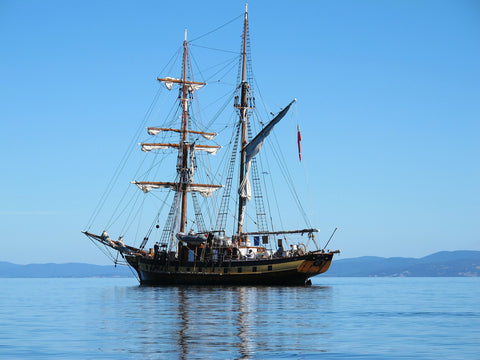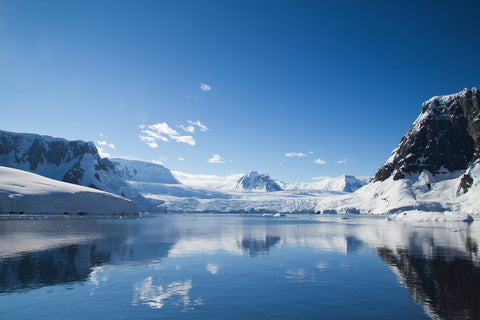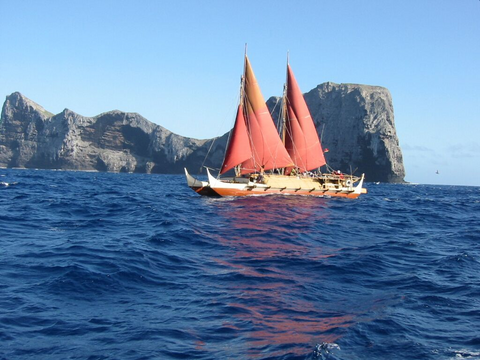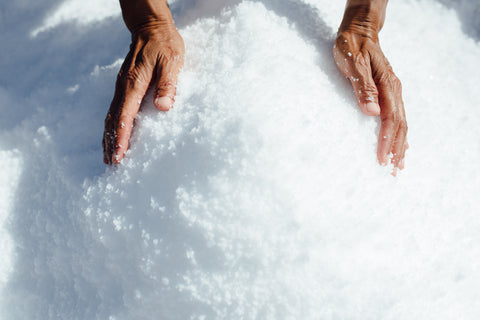The Epic Journey of Deep Ocean Water: From the North Atlantic to Hawaii
Traveling for 900 years in the Thermohaline Circulation, or the global ocean conveyor belt our waters encountered (or traveled beneath) a big chunk of human history. Vikings would have been in the North Atlantic just as our waters started sinking into the deep, European Explorers crossing the Atlantic as it travelled South, the dangerous Drake Passage would just started to be navigated as it circumvented the Antarctic and as it travelled back up North in the Pacific Ocean, Polynesian Voyagers were navigating the vast Pacific and settling the Hawaiian Islands.
The Thermohaline Circulation, is a profound force of nature, powered by the intricate dance of temperature and salinity across the globe's vast oceans. This system, where "thermo-" stands for temperature and "-haline" for salt content, orchestrates a deep and vast current that regulates the Earth's climate and distributes ocean nutrients.

The Start: Polar Depths
In the frigid embrace of the North Atlantic and the Antarctic, our water’s journey begins. Here, the formation of sea ice increases the salinity and density of the surrounding water, causing it to sink dramatically, sometimes over 2,000 meters deep, setting off on a centuries-long voyage. This water's travels below regions once roamed by Vikings marks the start of an odyssey through time and human history.

Through the Atlantic
As this dense, cold water travels southward, skirting the Americas, it continues into the depths of the Atlantic, its pace measured in centuries. This leg of its journey, which can take it to depths ranging from 2,000 to 4,000 meters, coincides with the era of the Age of Discovery, where new continents were unveiled, initiating centuries of exploration, colonization, cultural exchange and the reshaping human history.

Around Antarctica
Reaching the southern tip of South America, the water joins the Antarctic Circumpolar Current, influenced by westerly winds and transitioning into the Pacific through the Drake Passage. This segment, often moving through depths exceeding 4,000 meters, is as cold and deep as it is historic, passing waters explored by the likes of James Cook and the Challenger expedition, pioneers in the quest to understand our planet's most remote regions.

The Pacific Ascent and Arrival in Hawaii
Entering the Pacific, our traveler begins its slow ascent, warming and mixing with the upper layers of ocean water. This ascent, culminating in the nutrient-rich upwelling near Hawaii, is a testament to the Earth's natural processes. By the time it reaches Hawaiian waters, specifically drawn from 2,200 feet at Keahole Point on the Big Island, it has journeyed through varying depths, often much deeper than its point of extraction, across nearly a millennium.
The final stretch of its voyage is intimately linked with the history of Polynesian navigators, whose profound understanding of the stars, wind and ocean currents led them to explore the vast Pacific and eventually discover and settle the Hawaiian Islands.

Our Salt: A Testament to Connected Ecosystems and Cultures
The deep ocean water's journey from the North Atlantic to Hawaii and eventually transforming into our amazing salt is a vivid narrative of nature's enduring processes, connecting distant eras and regions. It bears witness to the rise and fall of civilizations and the bold endeavors of explorers, serving as a living reminder of our planet's dynamic history and the intricate connections within its ecosystems and cultures.






